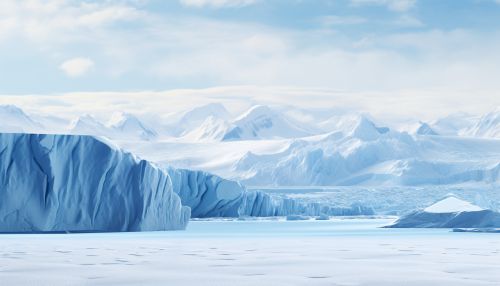The Dynamics of Glacial-Interglacial Cycles
Introduction
The Earth's climate has undergone numerous changes throughout its history, with one of the most significant being the alternating periods of glacial and interglacial cycles. These cycles, which are primarily driven by changes in the Earth's orbit and tilt, have profound effects on global climate, sea levels, and ecosystems. This article aims to delve into the dynamics of these glacial-interglacial cycles, providing a comprehensive understanding of their causes, effects, and significance in the context of Earth's climatic history.


Causes of Glacial-Interglacial Cycles
The primary driver of glacial-interglacial cycles is the Earth's orbital variations, collectively known as Milankovitch cycles. These include changes in the Earth's tilt (obliquity), the shape of its orbit (eccentricity), and the timing of the Earth's orbit closest to the Sun (precession).
Obliquity
Obliquity refers to the tilt of the Earth's axis relative to its orbit around the Sun. This tilt varies between 22.1 and 24.5 degrees over a period of approximately 41,000 years. When the tilt is greater, the summers are warmer and winters are colder, leading to increased melting of ice sheets and a transition towards an interglacial period.
Eccentricity
Eccentricity is the measure of how much the Earth's orbit deviates from a perfect circle. This deviation varies over a cycle of about 100,000 to 400,000 years. When the orbit is more elliptical, the Earth is closer to the Sun at certain times of the year, which can contribute to the onset of an interglacial period.
Precession
Precession refers to the wobble of the Earth's axis of rotation, which occurs over a cycle of approximately 26,000 years. This wobble changes the timing of the seasons by altering the point in the Earth's orbit where it is closest to the Sun. This can influence the distribution of solar radiation, thereby affecting the onset and duration of glacial and interglacial periods.
Effects of Glacial-Interglacial Cycles
Glacial-interglacial cycles have far-reaching effects on the Earth's climate, sea levels, and ecosystems.
Climate
During glacial periods, the global climate becomes cooler, with lower atmospheric carbon dioxide levels. Conversely, interglacial periods are characterized by warmer climates and higher atmospheric carbon dioxide levels. These changes in climate can influence weather patterns, ocean currents, and the distribution of plant and animal species.
Sea Levels
Sea levels rise during interglacial periods due to the melting of ice sheets and glaciers, and fall during glacial periods as water is stored in these ice formations. These changes in sea level can have significant impacts on coastal ecosystems and human settlements.
Ecosystems
The shifting climates and sea levels of glacial-interglacial cycles can drastically alter ecosystems. During glacial periods, species may migrate to warmer areas or adapt to the colder conditions. During interglacial periods, species may return to areas previously covered by ice, or new species may evolve to take advantage of the changed conditions.
Significance of Glacial-Interglacial Cycles
Understanding the dynamics of glacial-interglacial cycles is crucial for several reasons.
Firstly, these cycles provide valuable insights into Earth's climatic history, helping scientists to reconstruct past climates and predict future climatic trends.
Secondly, they offer a natural laboratory for studying the effects of climate change on various aspects of the Earth system, including ecosystems, sea levels, and the carbon cycle.
Lastly, they have shaped much of the Earth's surface, influencing the distribution of soils, the formation of landscapes, and the patterns of biological diversity.
